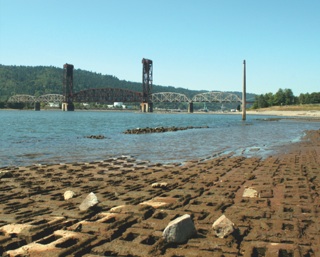 This summer a national group proclaimed a victory of sorts in Portland’s perpetual struggle to clean up contaminated industrial land along the Willamette River.
This summer a national group proclaimed a victory of sorts in Portland’s perpetual struggle to clean up contaminated industrial land along the Willamette River.
|
PORTLAND This summer a national group proclaimed a victory of sorts in Portland’s perpetual struggle to clean up contaminated industrial land along the Willamette River. The Chicago-based National Brownfield Association spent a year working with the Portland Development Commission and multiple government agencies on a roadmap that could turn idle, polluted land into profitable industry. The plan, however, is just that: a framework for some of the biggest issues — like how to actually fund the cleanup.
The federal Environmental Protection Agency’s delicate definition of a brownfield — land where “redevelopment is complicated by real or perceived environmental contamination” — is indicative of their sometimes-controversial nature: There are 18 such sites covering 338 acres along the Portland harbor. If only half of those sites were cleaned up and developed, says Kevin Johnson, a PDC program manager, it would create $320 million worth of investment and 1,450 new jobs.
That land, however, isn’t worth that much today. And that’s a key problem. It was comparatively easy to find development money to help clean other non-industrial-zoned brownfields, such as in South Waterfront or the Pearl District, since the value of the land offset the price of cleanup. But cleanup cost vs. industrial land value is, as Chuck Harman with the Oregon Department of Environmental Quality puts it, “pretty flat.” That doesn’t give landowners much incentive to clean up. A tax structure that decreases property taxes for polluted land, along with fears of what rehabilitation might cost, further diminishes landowner motivation.
One way to address that problem would be to change the zoning and allow non-industrial development. But pushing the industrial sector out to agricultural land would take jobs from the city and eliminate industry’s riverfront transportation trifecta: rail, water and highway.
Further complicating things are the land’s other values: as habitat, as green space, as part of Portland’s role as a green mecca. Willamette Riverkeeper executive director Travis Williams says some environmental groups have been more focused on pollution issues in the river itself. But rehabilitation of the land and development will undoubtedly come under the public’s land-use and environmental magnifying glass.
So how does the PDC proceed with its new plan? Slowly. The first step, Johnson says, is to identify sites where cleanup is financially feasible. Then the agency wants to find a large-scale developer who could purchase and develop multiple properties. Funding and grants from both state and federal agencies are available for cleanup. Bonds, city money and private/public partnerships would also have to be considered. There’ll also be a brownfield consultant.
“We’re looking for someone who can give us a broad perspective. What’s worked in other parts of the country, what it will take for us to utilize this land,” Johnson says.
ABRAHAM HYATT
Have an opinion? E-mail [email protected]

